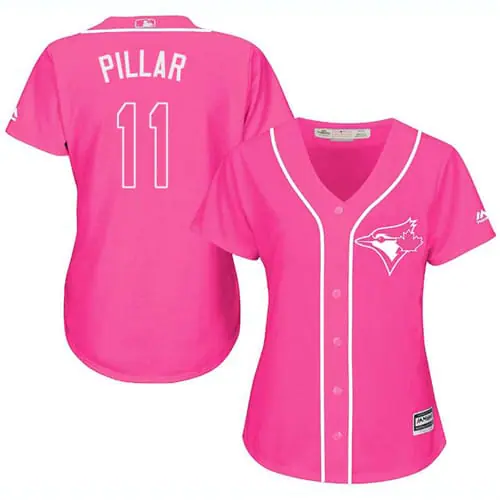Pink can be a polarizing colour for women. It can be especially polarizing for women in sports.
Pink is a colour we don’t usually associate with sports. In the major North American and European sports leagues, no team uses pink as its primary colour.
Yet, almost every sports team has pink merchandise. It’s likely the only colour every major hockey or baseball team sells a specialty jersey in. In a way, it’s the most popular colour for sports teams.
So, why is pink so polarizing for women in sports? Why do some fans love pink jerseys and others consider them insulting?
It relates to the pandering tactics of sports franchises and their marketing teams.
What is pandering?
Pandering is the act of providing a group exactly what they want for a personal advantage.
When people talk about pandering in sports, pink merchandise comes up a lot. It’s an obvious example, where the franchise creates something it believes women want in exchange for shilling out too much money on team-branded products.
There’s something to be said about pink merchandise getting more people riled up about pandering than other things teams sell.
Take the Toronto Blue Jays branded beer stein for example. Online, at the official MLB Canada shop, you can spend $29.99 to have your favourite team’s logo stamped onto an 18 oz. beer stein.
This product only exists to pander. It’s a product only useful to adults and people who drink beer. It is for a specific group. Blue Jays fans who really like beer are willing to give the franchise their money (the advantage) they want for it.
So why is pink merchandise seen more as pandering than this logo stamped beer stein?
Leaning too hard one way or the other
I’m against shoving pink down every woman’s throat. Even I, a self-proclaimed lover of the colour who earned the nickname “Pinker Posluns” from my friends in high school, haven’t always enjoyed it.
Assuming every woman will like something pink, or only giving women pink things, especially in a male-dominated field like sports, shows an individual expectation of women in that context.
This leads to assumptions like, “She doesn’t know the game as well as a man,” or, “She can’t actually be interested in the sport.” It leads to people seeing a woman in a pink jersey as someone who doesn’t belong in the stands or in the media scrum.
However, the suggestion that pink merchandise itself is sexist or blatantly pandering also rubs me the wrong way.
I’d argue that pink merchandise is seen as pandering over other sports merchandise because people think it’s advertising to a crowd outside the team’s target audience. By making this assumption, these people are suggesting women, and anyone who leans a little more traditionally feminine in their gender presentation, are outside of this audience.
It’s more obvious to us because we don’t see “real sports fans” liking pink. “Real, masculine sports fans” who buy beer steins would’ve bought them anyway because those things aren’t mutually exclusive to us. It doesn’t come off as pandering.
But a person who likes pink? Forget about them buying the jersey because they like the team!
Suggesting these women who want a pink jersey are outside the target audience, and thus have to be specifically pandered to in a way that’s unacceptable, is a whole other type of sexism.
To accept women in sports, we have to accept feminine women in sports, including women who like their pink sports merch.
Consensus
The existence of pink merchandise for sports teams doesn’t mean women and girls should have it shoved down their throats. It also doesn’t mean that someone who owns pink merchandise doesn’t care or know about the game.
The pink jersey is capitalism at work, creating a market for a consumer group the way it always has. Saying it’s pandering harder than any other merchandise is what’s really insulting here.
There’s no clear answer on how to treat pink in sports because of its confusing role, but my answer is simple. Let people like what they like, and give people the chance to buy what they want.


Recent Comments